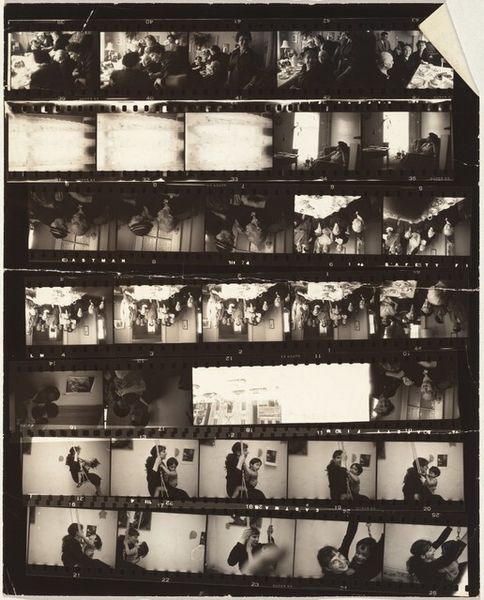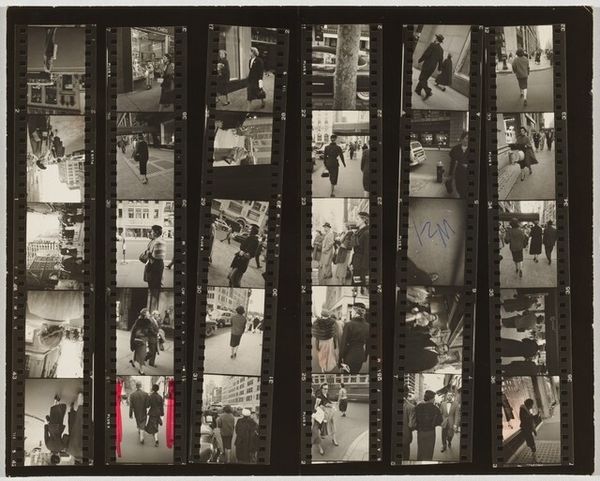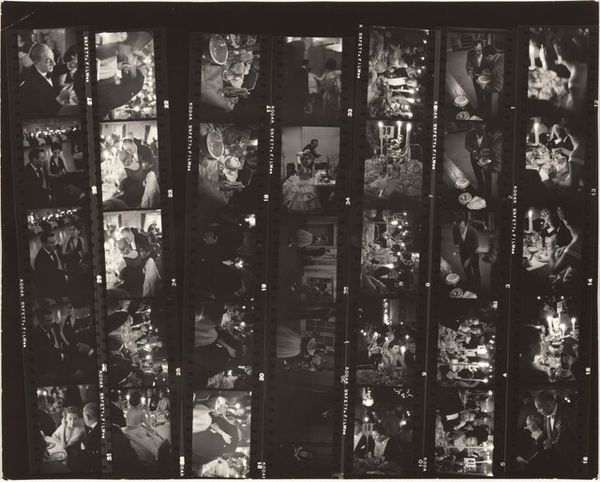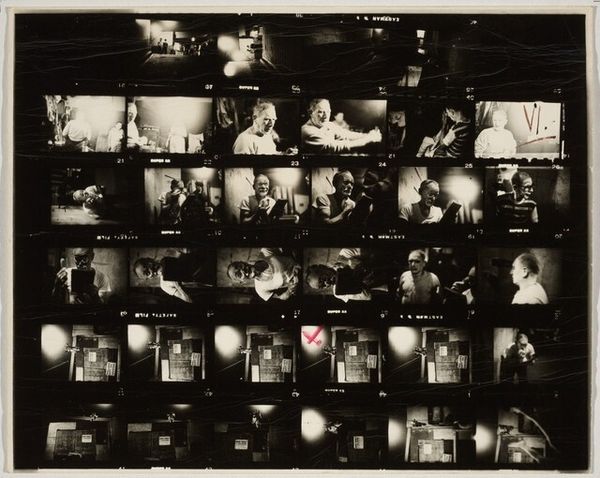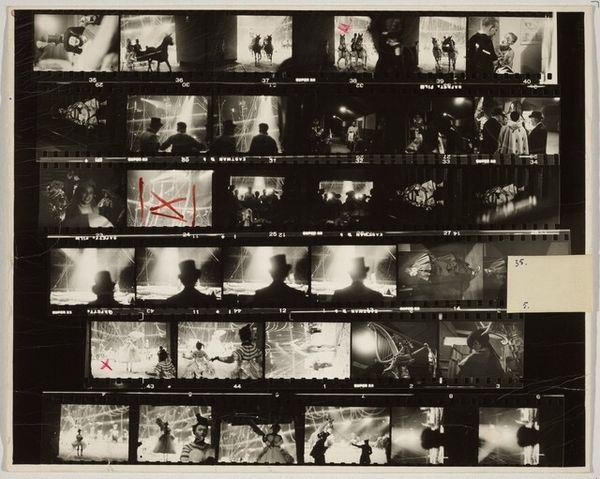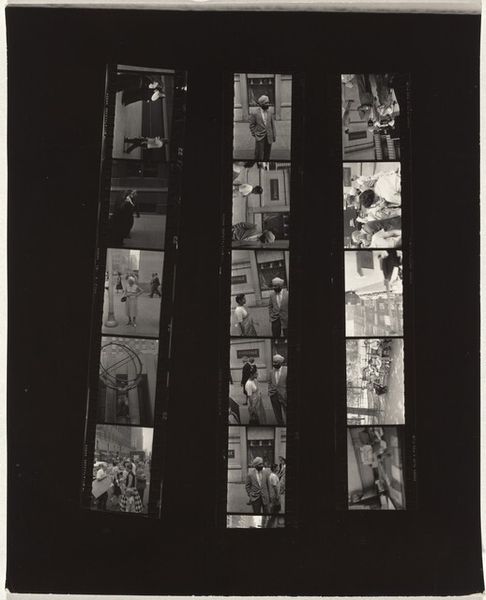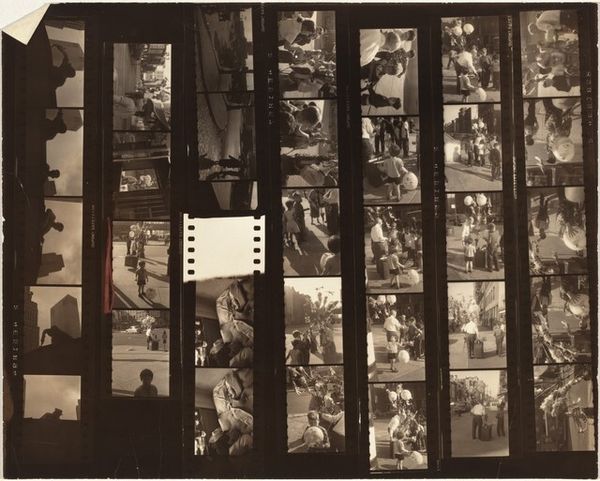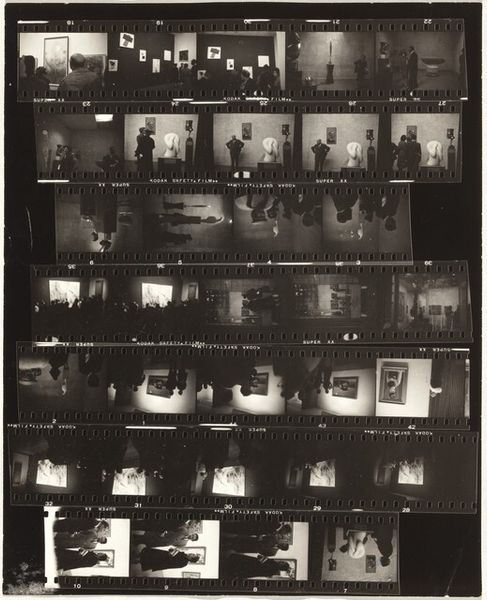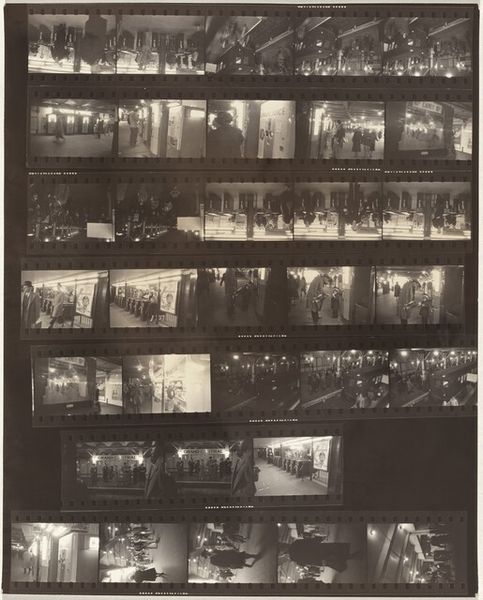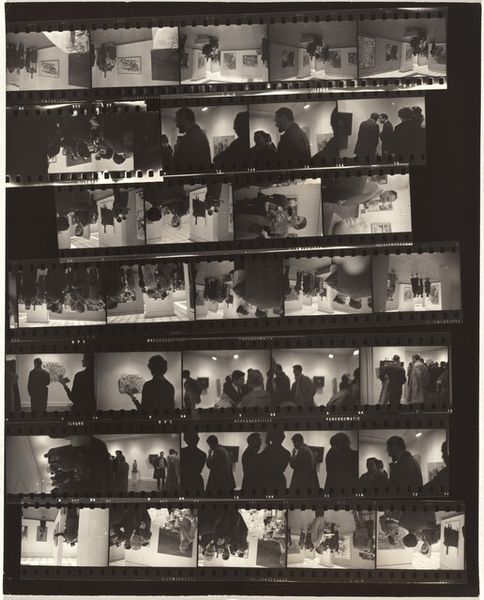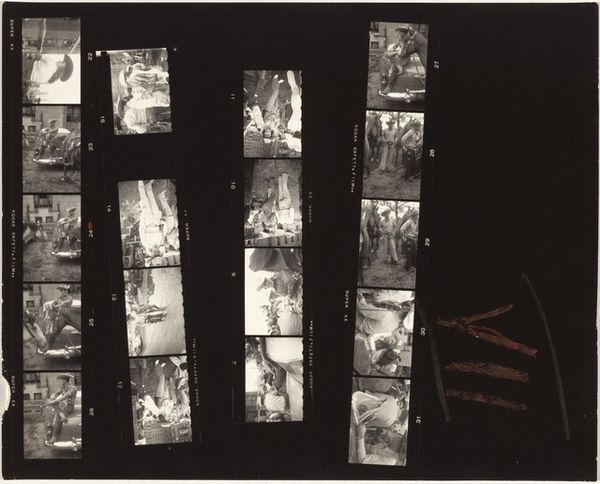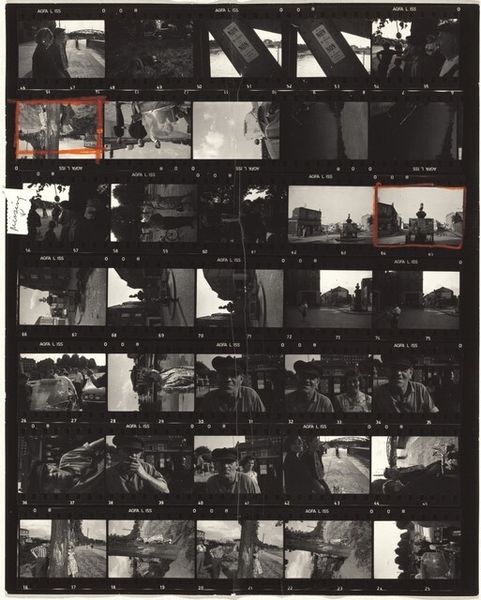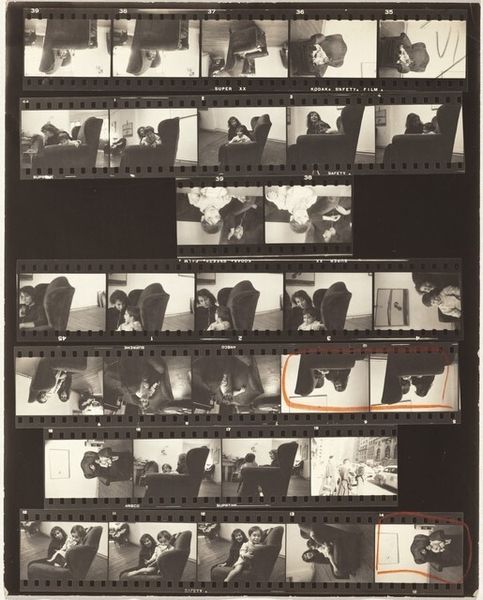
photography, gelatin-silver-print
#
portrait
#
street-photography
#
photography
#
gelatin-silver-print
#
cityscape
#
modernism
Dimensions: overall: 20.2 x 25.3 cm (7 15/16 x 9 15/16 in.)
Copyright: National Gallery of Art: CC0 1.0
Curator: This is a contact sheet of gelatin silver prints by Robert Frank, titled "Vogue Women--New York City W10," created between 1952 and 1953. Editor: My first impression is one of ordered chaos. The grid structure of the contact sheet creates this sense of order, but the images themselves…they're all glimpses of urban life, fractured moments. Curator: It's fascinating how Frank captures this slice of 1950s New York, specifically focusing on women who embody a certain fashionable ideal promoted by "Vogue" magazine. He's playing with the role of media and its influence on the public’s perception of beauty and aspiration. Editor: The high contrast gives everything a stark feel, and that grit juxtaposes really strongly with the implied elegance of the subjects. Notice how the sharp lines of shadows carve into each frame—dividing the space. Curator: He does more than merely document these women. He critically engages with their representation in fashion media. It is his reflection on social status and conformity. Editor: Right, and even within each frame, look at the light. It’s dramatic and unbalanced. Sometimes a face is fully illuminated; at others, figures are starkly silhouetted, emphasizing form. The varying exposure really lends it a kinetic feel, like the fleeting moments on the street itself. Curator: Exactly, by arranging these candid snapshots into a structured grid, Frank forces the viewer to contemplate the repetitive, manufactured nature of media imagery and its pervasive influence. The film's very edges serve to frame New York City in his work. Editor: The sequential nature highlights his method—capture, evaluate, refine. These images together hint at an intuitive creative process. I feel invited into Frank’s studio, almost watching his process of selection and rejection. Curator: Precisely. I see Frank using photography as social critique and reflection on America's obsession with consumer culture during the post-war years. Editor: So it's about challenging and deconstructing those established conventions rather than simply representing the beautiful or ideal image itself. This forces us to look at how we receive it. I think Frank did just that! Curator: An insightful glimpse into a transitional era, indeed! Editor: A fitting summary, I must say!
Comments
No comments
Be the first to comment and join the conversation on the ultimate creative platform.

